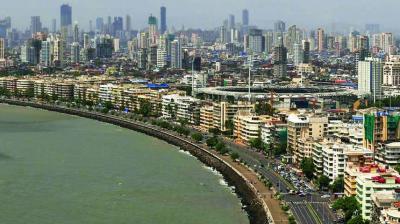Over the past last two years, the Maharashtra government received more than 2,400 applications from housing societies requesting deemed conveyance. According to the data from the office of Commissioner for Cooperation and Registrar, Cooperative Societies, between April 2020 and March 2022, it received 2,475 such applications for title transfer of which it approved 2,301 during the first three waves of the pandemic.
We get experts, Avikshit Moral and Yash Modi of IndusLaw to answer all questions regarding the Deemed Conveyance of properties in Maharashtra. Read to find all you need to know.
What is a Conveyance Deed?
It is a legal document that transfers the ownership of land and the building structure from the developer-builder to a co-operative society or a similar organisation of flat buyers formed for that purpose.
Section 11 of the Maharashtra Ownership of Flats (Regulation of the promotion of construction, sale, management and transfer) Act, 1963 (MOFA Act), and Rule 9 of the Maharashtra Ownership of Flats (Regulation of the promotion of construction, etc.) Rules, 1964 (MOFA Rules) prescribe a period of four months from the date on which the organisation of flat purchasers is legally formed for conveying the title to the organisation of flat purchasers, if there is no mutually agreed period for conveying the title to the flat purchasers.
Section 17 of the Real Estate (Regulation and Development) Act, 2016, (RERA Act) and Rule 9(2)(ii) and (iii) of the Maharashtra Real Estate (Regulation and Development) (Registration of real estate projects, Registration of real estate agents, rates of interests and disclosures on website) Rules, 2017 (RERA Rules) prescribe three months from the date of issuance of occupancy certificate for conveying the title to the organisation of flat purchasers in the absence of local laws.
What is Deemed Conveyance?
When the developer-builder fails or refuses to execute the conveyance deed in favour of the organisation of flat purchasers, an application can be made by the organisation to the concerned District Dy. Registrar, Co-operative Societies Office, for effecting the conveyance in accordance with Section 11(3) of the MOFA Act. A deed so executed is called deemed conveyance.
Who can avail the benefit of deemed conveyance?
Under Section 11(3) of the MOFA Act, a co-operative society, a company, an association of flat takers or apartment owners can avail the benefit of deemed conveyance.
Also Read | Maharashtra gets 2.4K applications from housing societies for deemed conveyance amid COVID-19, clears 92% applications
What is the stamp duty applicable for deemed conveyance?
The stamp duty applicable for deemed conveyance is specified under Article 25 of the Maharashtra Stamp Act, 1958 (MSA Act) and the Government Resolution of the Government of Maharashtra, Co-operation, Marketing and Textile Department, dated June 22 2018 (GR) as follows:
1) If the conveyance deed expressly states that there is no balance Floor Space Index (FSI), and the current Architect’s Certificate is attached in that regard and the agreement for sale in respect of individual flats is properly paid under Article 25 of MSA Act, Indian Rupees (INR) 100 (One Hundred) x number of flats. The adjudication of stamp duty is not necessary in this case.
2) In all other cases, adjudication of stamp duty by the concerned Collector of Stamps is necessary. Documents, as mentioned in paragraph 2(D)(2)(ii) of the GR, must be submitted for adjudication of stamp duty. Further, during adjudication, factors such as adequacy of stamp duty paid by individual flat purchasers is to be taken into consideration, and, in case of inadequate stamp duty, penalty is levied under the provisions of the MSA Act.
What is the procedure for effecting deemed conveyance?
The procedure for effecting deemed conveyance is briefly prescribed as follows:
1) Stage I: Application in Form 7, with the documents, as mentioned in the GR with the concerned Deputy District Dy. Registrar, Co-operative Societies Office. The notices are served to the parties concerned under Rule 13(2) of MOFA Rules. If the application is found proper and after hearing, an order for deemed conveyance is passed.
2) Stage II: The draft document of deemed conveyance with the details of stamp duty of all flat owners should be adjudicated from the Joint District Registrar and Collector of Stamp.
3) Stage III: After adjudication of stamp duty, registration with concerned Sub-Registrar of Assurances.
4) Stage IV: The procedure for deemed conveyance is complete only after entering the name of the applicant in the 7/12 extract or the revenue records by the concerned Talathi or Circle Officer.
What is the time limit for effecting deemed conveyance?
There is a time limit for effecting the deed by the builder-developer as stated above. However, there is no express prescribed time limit for effecting it currently.
What are the difficulties in effecting deemed conveyance?
The difficulties are as follows:
1) Documents to be submitted, along with the application, are to be obtained from various departments. This delays the process.
2) Non-payment of stamp duty on individual agreements for sale (as discussed above) increases the cost and further delays the process.
3) Though a deemed conveyance order can be passed despite a pending civil suit, it is subject to the decision of the civil suit. This further enhances the complexity of the process and prospective applicants are deterred from applying for deemed conveyance.
Yash Modi, Associate at IndusLaw also contributed to this article





































